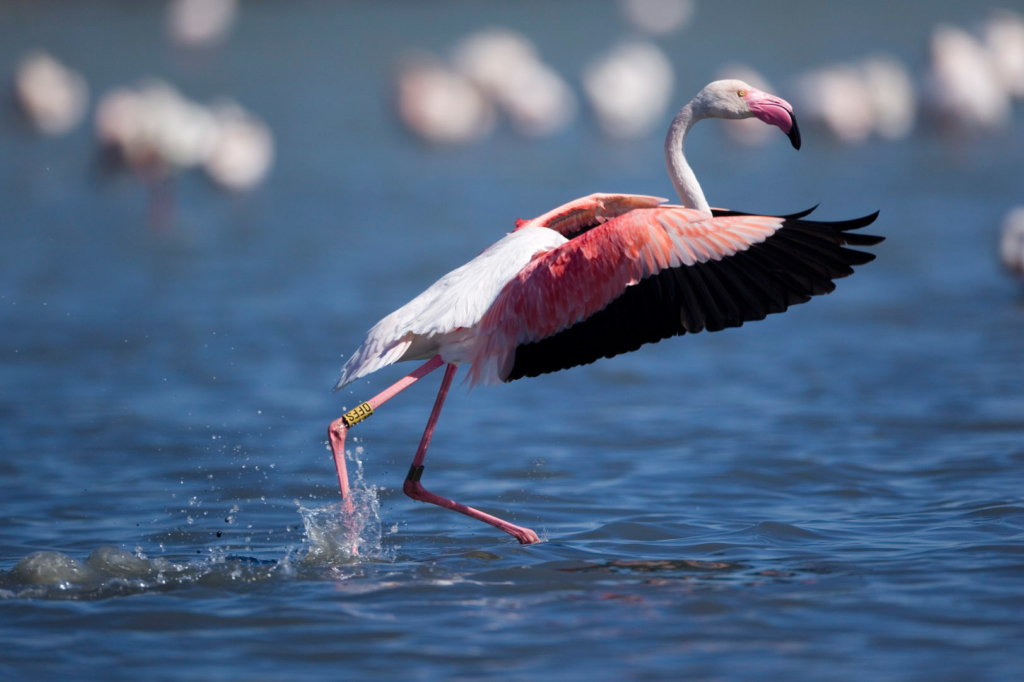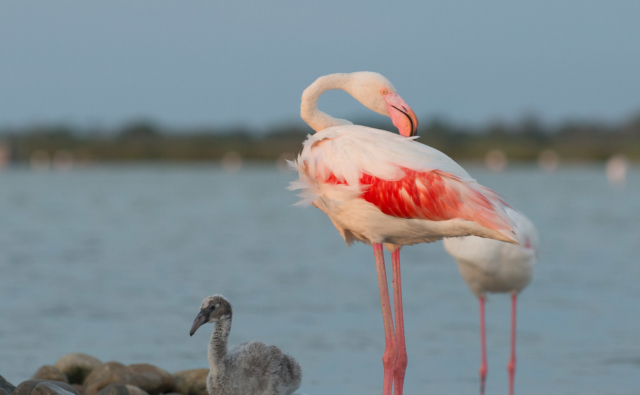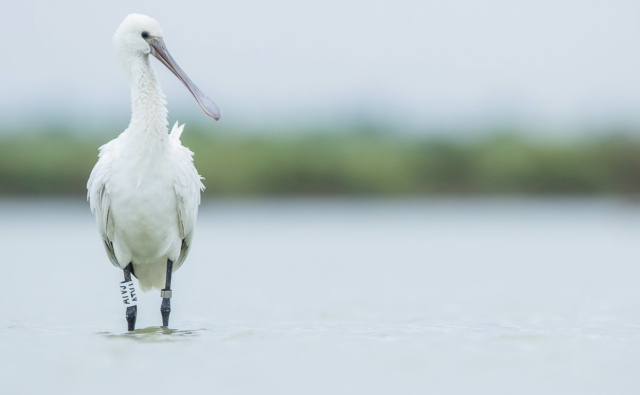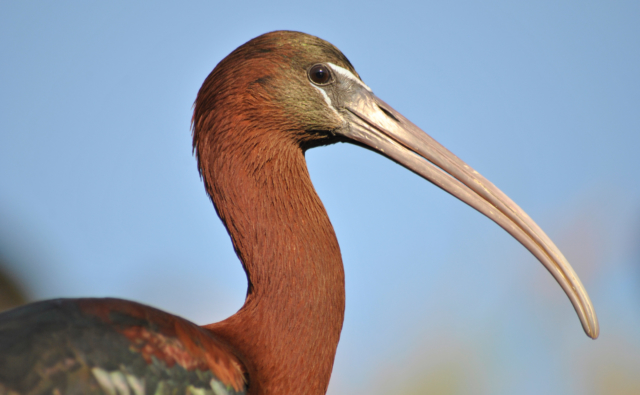
This article was published in the Behavioural Ecology and Sociobiology journal in July 2018.
Colourful plumage is typical of males in species with conventional sex roles, in which females care for offspring and males compete for females, as well as in many monogamous species in which both sexes care for offspring. Reversed sexual dichromatism—more colourful females than males—is predominant in species with sex role reversal. In the latter species, males care for offspring and females compete for mates, the mating system is mainly polyandrous and there is reversed size dimorphism—females are larger than males. Here, we document a case of reversed dichromatism, in the greater flamingo Phoenicopterus roseus, in which there is no sex role reversal and no reversed size dimorphism.
Although theoretical models postulate that cases of reversed dichromatism should be rare among monogamous ornamented birds, our findings show that the use of cosmetics might be a mechanism for the occurrence of more ornamented females than males. Indeed, the concentrations of carotenoids in the uropygial secretions used as make-up were higher in females than in males. Apparently, there was a trade-off between coloration and antioxidant defence, as the concentrations of carotenoids in the uropygial secretions were lower during chick provisioning than in other periods, contrary to those in plasma. In this system, the application of make-up would act as a dynamic signal, which would allow a rapid reallocation of resources used for signalling among functions depending on needs. Cases like this may have evolved to signal the ability to provide parental care when females are more physiologically stressed than males.
You can access this article on the Tour du Valat documentary portal here.
Référence bibliographique : Amat J.A., Garrido A., Portavia F., Rendón-Martos M., Pérez-Gálvez A., Garrido-Fernández J., Gómez J., Béchet A., Rendón M.A. 2018. Dynamic signalling using cosmetics may explain the reversed sexual dichromatism in the monogamous greater flamingo. Behavioral Ecology and Sociobiology [Internet] [cited 2018 Jul 26]; 72. doi: 10.1007/s00265-018-2551-1



